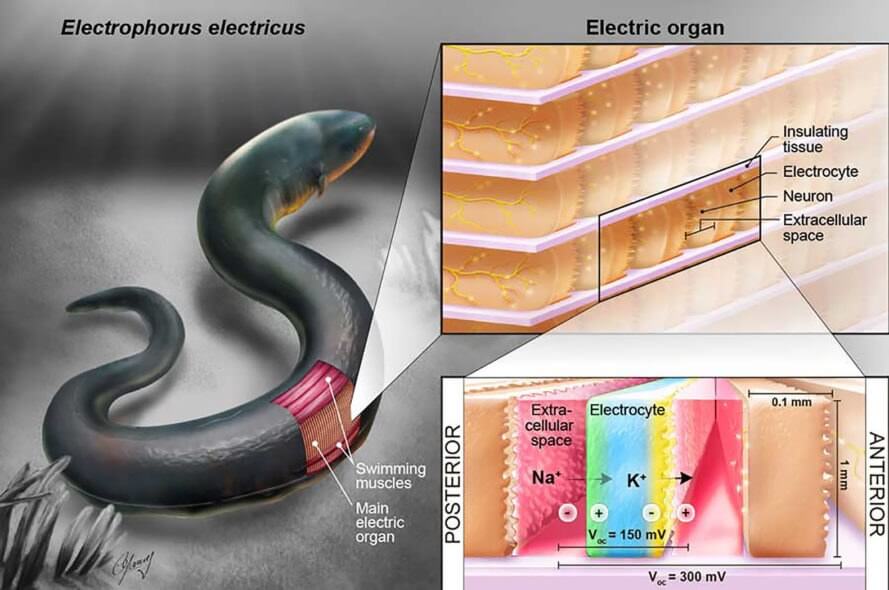New battery mimics an electric eel’s shock
From succulent-style water collection to ‘sponge cities’, nature-based solutions are leading us into a more sustainable future. Now, scientists have created a soft, foldable battery inspired by electric eels.
How an electric eel generates a shock
Did you know the electric eel typically grows to about two meters in length, weighing in at an average of 20 kg? They’re also extremely powerful, with a shock that’s up to 860 volts of current lasting a couple milliseconds—a capacity similar to a stun gun.
The electric eel has three pairs of organs that produce electricity, which make up four-fifths of its body. The organs are made of electrocytes and are lined up so a current of ions can flow through them and are stacked so each one adds to a potential difference. When the eel is ready to shock, the ion channels are opened and allow sodium to flow through, which reverses the polarity and generates an electric current.

How the battery works
Now, an international team of researchers are using the electric eel as inspiration for soft power cells that could potentially be used as implants to run pacemakers, health monitors, etc. However, their prototype is a far cry from the maximal power of an electric eel, generating only about 110 volts.
While the battery isn’t strong, it does offer an alternative that’s non-toxic (which is why it lends itself well to be used in the human body) not to mention—more sustainable. Typical batteries house toxic chemicals like lead.
The innovation features 2,500 units of sodium and chloride dissolved in water-based hydrogels. One sheet has rows of hydrogel droplets, which alternate between salty hydrogels and water ones. The other sheet has charge-selective hydrogels, each one allowing either positively charged sodium or negatively charged chloride gels to pass through. When the sheets are folded and pressed together, the alternating gels generate a current.
The team iterated on their design by incorporating an intricate Miura fold, which is also used in origami. They are continuing to find ways to increase the power source’s efficiency, by trying to make the hydrogel membranes thinner for example.
Learn more via this video by Michigan Engineering:

